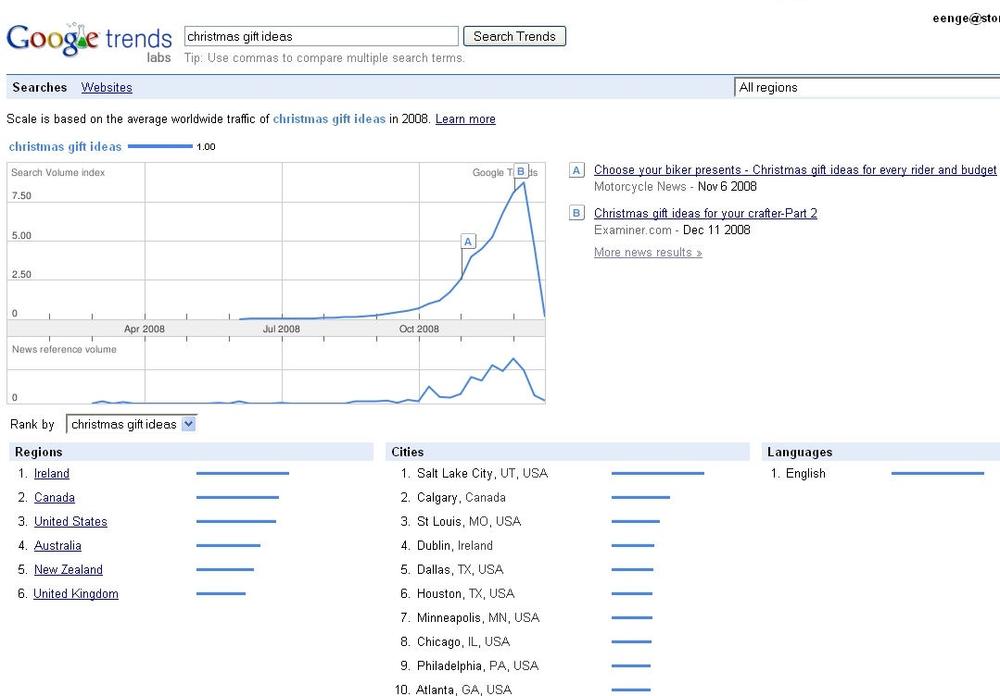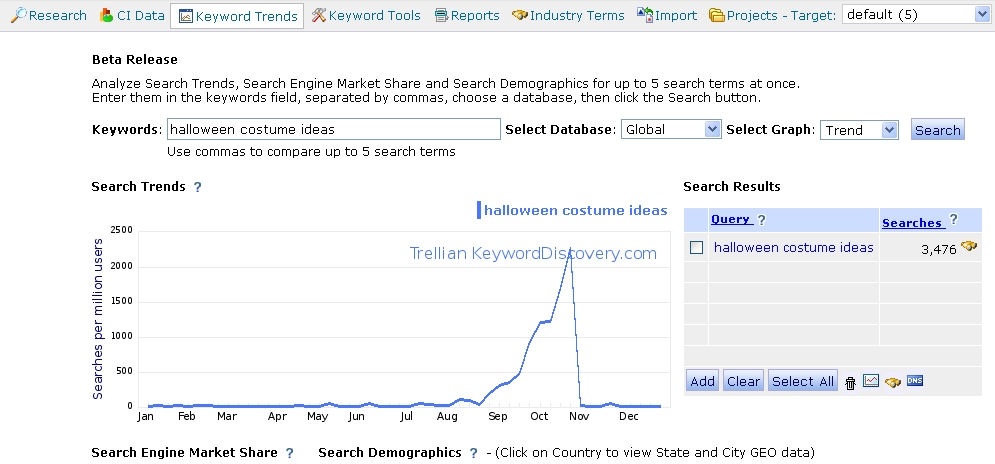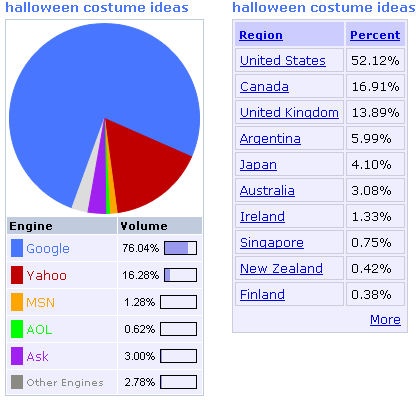One of the subtleties of keyword research, and of any fully developed SEO strategy, is that the use of keywords varies significantly over time. For instance, major holidays inevitably lead to bursts of keyword volume related to those holidays. Examples could be searches such as Halloween costumes, gift ideas for Christmas, or Valentine’s candy.
If you want to write holiday-related content, it will be important to have your site visible in the SERPs for those search queries prior to that holiday’s buying season so that you’ll get optimum traffic for those terms. And since the search engines take considerable time in ranking your pages, advance preparation is required. To investigate this further, let’s examine the Google Trends data for a period of 12 months for the search term halloween costume ideas (see Figure 5-37).
As you can see, searches begin gaining traction toward the end of August and into autumn; thus, if you are doing SEO for Halloween-related terms, you would want to have the related content and links in place by the beginning of the summer so that search engines can find and index your content, and therefore you’re more visible to searchers when they start doing research. A long-term SEO approach would take this into consideration as part of the overall strategy for the site. Searches start consistently increasing toward the end of September. You can keep trying more examples. With Valentine’s Day, the searches start in mid-December.
A similar pattern emerges for Christmas-related searches. Figure 5-38 shows an example for christmas gift ideas. Searches start consistently increasing toward the end of September. You can keep trying more examples. With Valentine’s Day, the searches start in mid-December.
In each case, searches started increasing about two to three months before the holiday, so it is important to acknowledge that and start crafting your content and targeting those keywords in ample time for them to be indexed before the searches start gaining traction.
KeywordDiscovery (http://www.keyworddiscovery.com) also graphs search trends, so if you have an account, you can analyze these graphs to craft a holiday campaign, as shown in Figure 5-39.
You can see when people begin to search for Halloween costumes and when the activity drops off. Looking a bit farther down you can see the search engines receiving the search queries and the countries they are coming from, as shown in Figure 5-40.
Don’t take your cue from when the stores start stocking Halloween candy—do the research and find out what last year’s trends were so that you’re prepared this year. If you prepare early enough, you’ll be ready, while your competitors are scrambling with last-minute link-building campaigns three weeks before the holiday.
Also, don’t remove your Halloween (or other seasonal) page as soon as the time frame has passed. Once you have fought hard to get rankings for your seasonal trophy term, you want to make sure you get the benefit for that hard work next year. Too many sites delete or archive these seasonal pages after the season is over, and then they have to start over again next year. A better strategy is to leave the page in place until a new version is created, reuse the same URL, and archive the old content to a different URL. Leaving the page in place will give you a jumpstart when it is time to begin ramping up next year.




